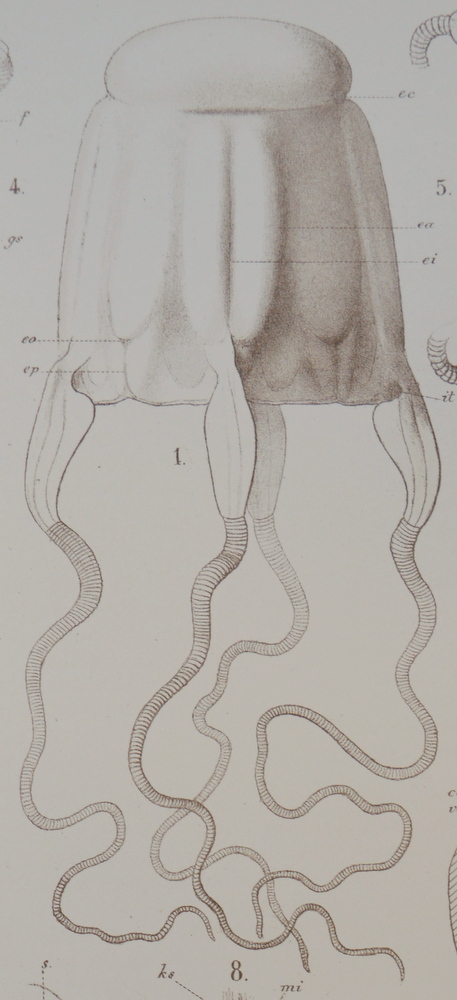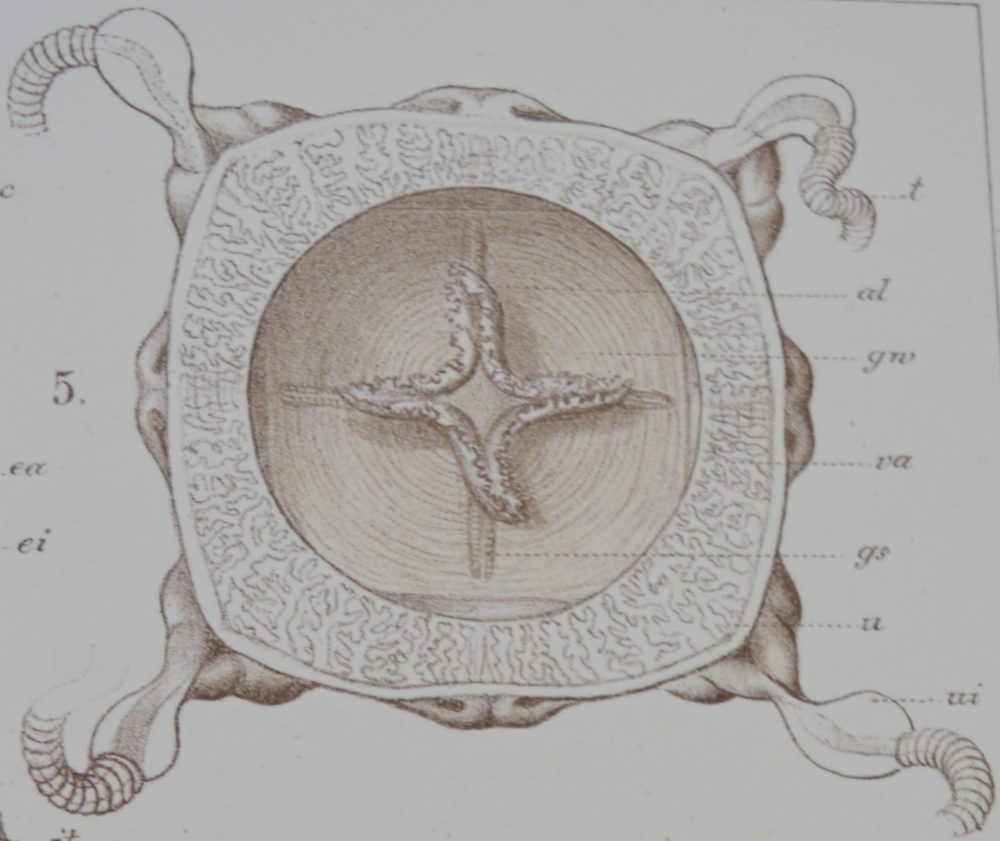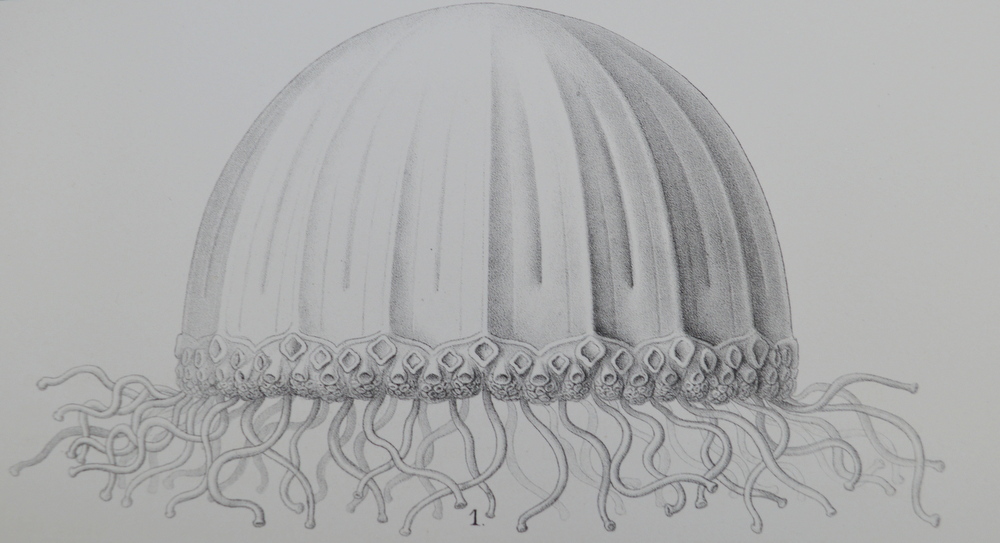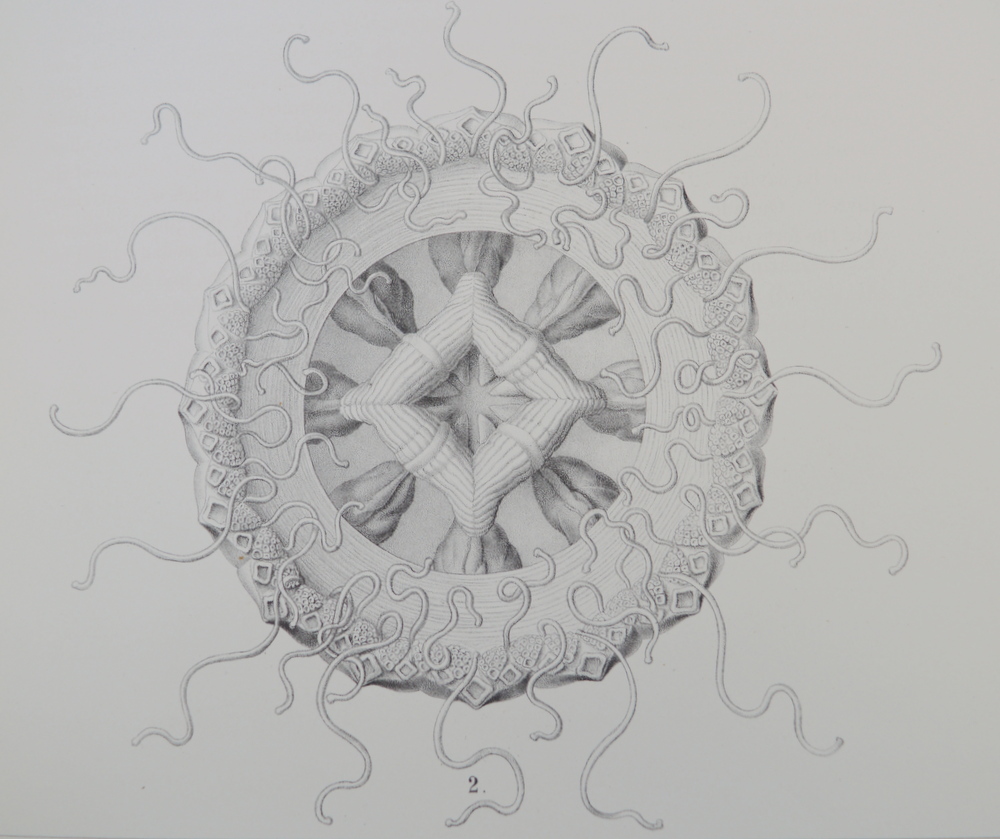Hello and Happy New Year to you all!
January’s jellyfish! For this month’s post I am going to tell you about two species of the jellyfish found around the seas from the HMS Challenger expedition. They are named differently now but after a bit of research we found out what their current names/species are.

Let’s start with the genus Carybdea – the jellyfish belonging to this genus are known as box jellyfish – you don’t want to mess with these! They are highly venomous and their sting attacks the heart and nervous system, which can instantly kill prey. These jellyfish have tentacles from each corner of their bell, each one with about 5000 stinging cells.

The two females found by the Challenger (Charybdea murrayana, now Carybdea murrayana) were found on April 9th 1876 at station 348, off the West Coast of Africa, not far from Sierra Leone. An interesting fact about box jellyfish is that they have ‘true’ eyes (as well as simple eyes). The simple eyes just detect light but the ‘true’ eyes have a retina, lense and cornea. It has been shown that these are used to help navigate by looking upwards to the mangrove canopies. This is where they usually feed and by detecting the canopies they stay underneath them to ensure they don’t stray too far from home. If cover is removed, they have no sense of orientation.

Next up we have the genus Ptychogastria. These don’t have a common name and only one of these jellyfish was found on the expedition. These attractive jellyfish are from the order Trachymedusae. A lot of jellyfish have two body forms – polyp (stationary) and medusa (free-swimming). However, this order of jellyfish just grows in to the medusa stage. Although they grow only into the free-swimming form, they have suckers to attach themselves to rocks, waiting for prey to pass so they can reach out their tentacles to capture them. So they don’t swim that much after all! The one Ptychogastria jellyfish found was from station 50 – on the 21st May 1873 near Halifax, off the east of Canada. It was then identified as Pectyllis arctica but has since been updated to Ptychogastria polaris.

Thanks for reading and see you next month!